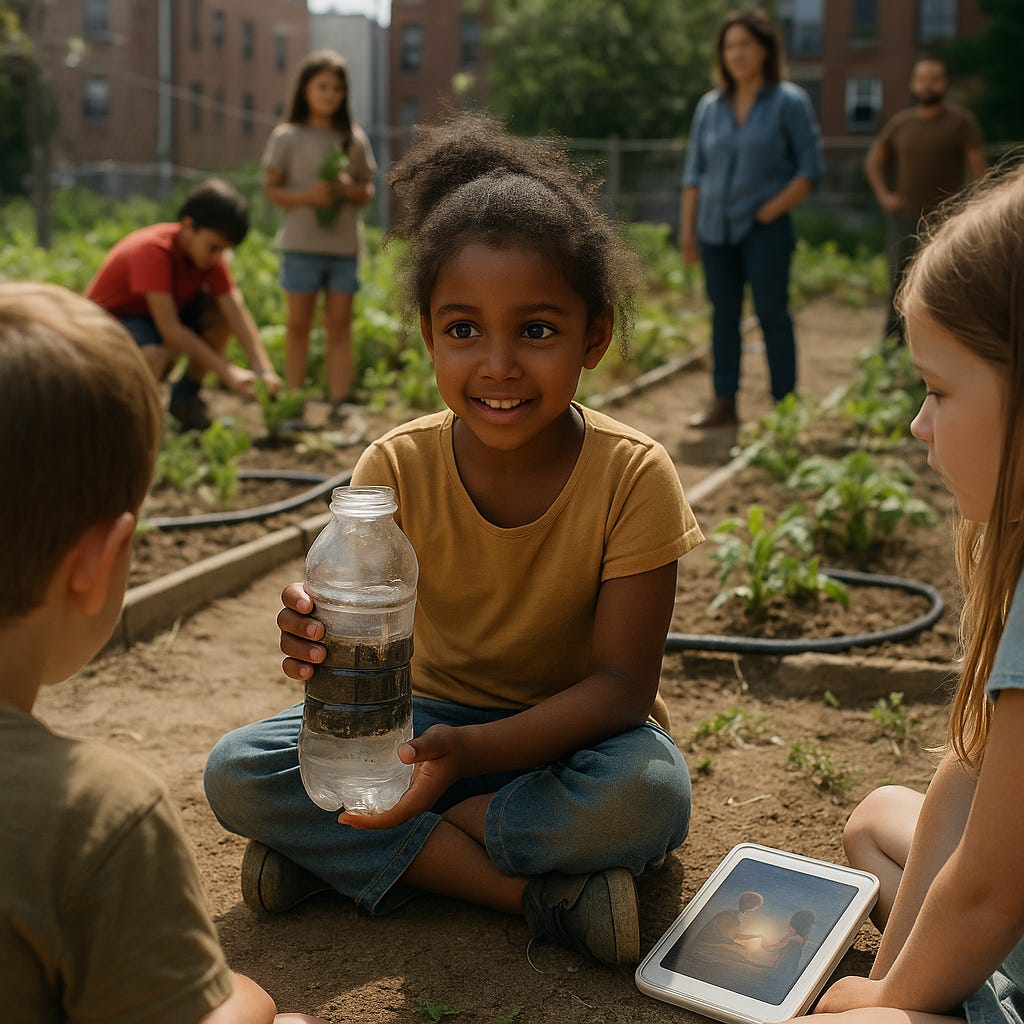Growing Up Solutionists: How Scarcity Makes a Regenerative Generation
Mapping Gen Beta’s Solutionists as a Regenerative Possibility Chain
In their latest post,
and invite us into a vivid glimpse of what happens when the next generation — Generation Beta — grows up in a world where stability is a luxury. In Introducing Gen Beta: The Solutionists, we meet Amani, a child who, at just seven years old, has designed water filtration systems and mediated neighborhood disputes over scarce garden plots. In her world, innovation and peace-building are not separate skills. They’re the same skill: holding a community together through the turbulence.Alex and Joana’s scenario is powerful on its own. However, it also reveals something deeper that I’ve observed in my work on Regenerative Possibility Chains (RPCs): sometimes, the seeds of systemic renewal emerge in the most overlooked places — in this case, the minds and hands of our children.
From Collapse Vectors to Living Semantics
When I map Amani’s world as a regenerative possibility chain, it looks like this:
The anchor pressure is clear: water scarcity, conflict, resource depletion, broken institutions.
The collapse vectors are real: community fragmentation, mental health crises, loss of meaning and trust.
But the hinge point is extraordinary: the community stops waiting for top-down fixes. Children become co-innovators and bridge-builders — not when they’re older, but now.
What’s beautiful here is that scarcity becomes an enabling constraint, not just a dead-end. It forces ingenuity, cooperation, and hyperlocal solutions that work because they’re born from the real limits of the place.
Regenerative Literacy: A Skill for Survival
Amani’s community doesn’t just teach kids facts — they teach them how to read patterns, design under pressure, and hold competing needs together. This is what I call regenerative literacy: the capacity to sense systemic stress, see possible fracture points, and respond in ways that generate trust and meaning.
The bedtime dream book — a living, AI-generated story told by ancestors — is more than a sweet artifact. It’s an example of living semantics: a symbolic infrastructure that maintains coherence and allows it to evolve across generations. It’s the glue that holds the community’s identity together while everything else shifts.
What We Can Learn From Solutionists
Alex and Joana ask: Can Gen Beta’s hands-on approach lead to more collaborative solutions?
I’d add: Could they show us how to embed constraints, regenerative literacy, and living semantics in every community that hopes to thrive through complexity?
The Solutionists remind us that:
Constraints aren’t the enemy — they’re the boundary conditions that spark life-giving creativity.
Regenerative literacy isn’t an add-on — it’s the core skill for surviving convergence.
Living semantics and storytelling aren’t soft skills — they’re how meaning and trust persist under stress.
An Invitation
I see Amani’s world as more than a scenario — it’s a signal. Early signs are already here: kids co-designing gardens in drought zones, young climate leaders reimagining city blocks, communities using AI not just for productivity but as a living memory. If you see these signals too — or if you’re helping to grow them — I’d love to hear about it.
What are you seeing where children’s ingenuity is the hinge point?
How do we design education, governance, and technology to nourish their role as Solutionists?
Drop your reflections below. And thanks to Alex and Joana for painting a picture that feels less like dystopia, more like a possible hinge toward something regenerative.



Dave this is such an inspiring interpretation of our scenario. Thank you for bringing it to the attention of your community and followers because we can all learn from each other and work to empower future generations. Possibility chains are a great way of helping bring the stories to life